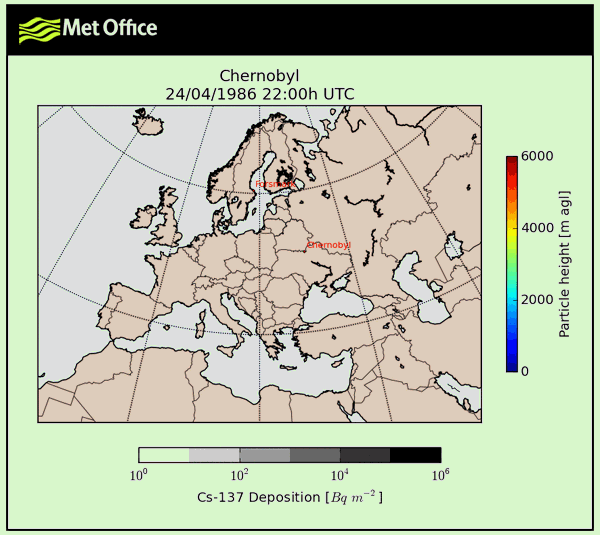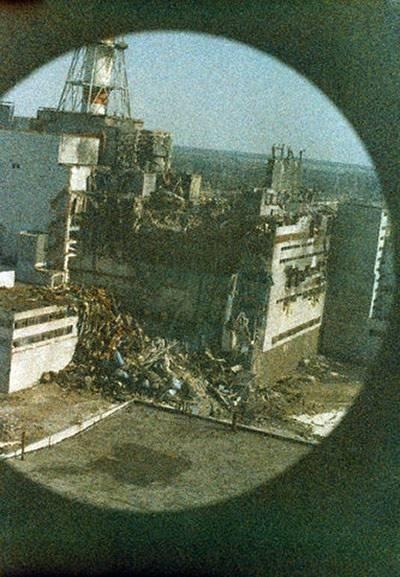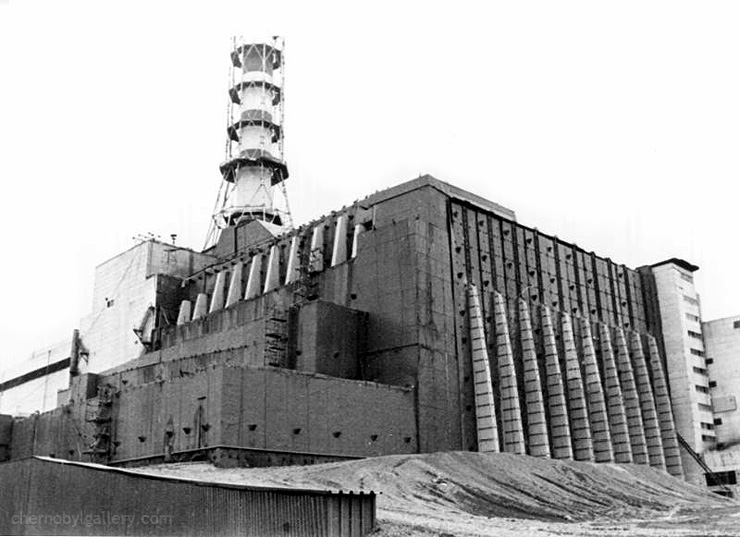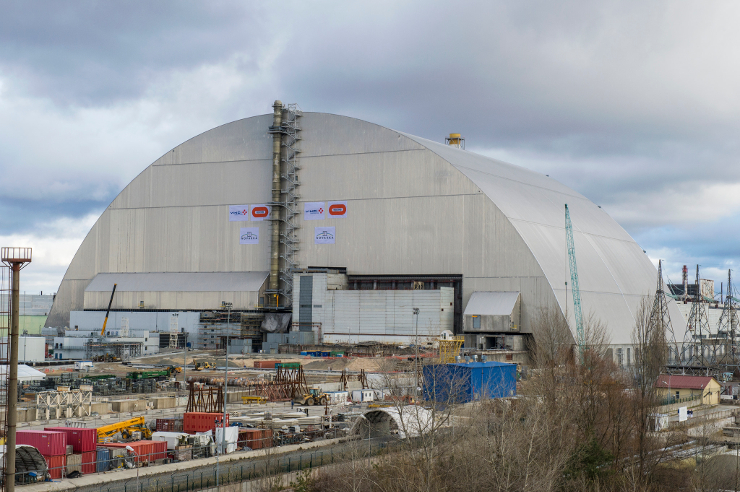CSCI 491: Chernobyl
On April 28, 1986, Cliff Robinson and his colleagues repeatedly set off a radiation detector between the controlled and uncontrolled areas at the Forsmark reactor in Sweden. The radiation readings confused the team working at the power plant, their plant was operating exactly as expected—there was no way the radioactive cesium-137 they were detecting could have been emitted from their plant. Other nuclear power plants in Sweden combined their results and traced the radioactive plume back to its origin: Chernobyl in modern Ukraine.

The Chernobyl disaster started during a test of a backup safety system. Nuclear reactors continue to generate heat after they are shut down as the fission products decay to inert elements. In the event of power loss, the Chernobyl reactor plant would have to wait a minute before backup diesel generators could provide power to the cooling system. This delay was considered unacceptable so a new system was theorized. The new system would use the kinetic energy in the steam turbines to power the cooling system until the generators could. As part of the test, reactor #4’s output was decreased from 3000 MW to 700 MW. Hours later xenon poisoning brought the reactor to a nearly shutdown state unacceptable for the test. To bring reactor power up to the level required for the test nearly all of the control rods were withdrawn from the reactor. The reactor power climbed rapidly and operators attempted an emergency shutdown of the reactor. It was too late; the control rods could not halt the fission reactions within the reactor and the reactor exploded.

The explosion destroyed the containment vessel around the reactor, ejecting graphite into the Chernobyl reactor site. The core of the reactor caught fire as air replaced the water that had been cooling the reactor. Over the next several days helicopters dropped approximately 5000 tons of sand into the reactor to extinguish the fire. The fire caused fission products like cesium-137 to travel high into the atmosphere where they would disperse over much of northern Europe. When the fires had been extinguished, soldiers were brought in to shovel radioactive material from the roof of the complex back into the reactor core. These soldiers were subjected to immense amounts of radiation exposure. Once most of the intensely radioactive material was back in the reactor a sarcophagus was constructed, sealing the reactor from the outside world once again.

In December of 2000, the last reactor at the Chernobyl plant was shut down signaling the end of power generation at the Chernobyl site. The three remaining reactors are expected to be decommissioned as radiation levels at the Chernobyl plant continue to decline. In September 2010 construction began on the New Safe Confinement (NSC) project to replace the aging hastily built sarcophagus currently containing the reactor. In November of 2016 the NSC was moved into place and sealed in the entirety of the old sarcophagus. NSC is the largest structure to ever be moved on land. NSC is projected to survive for a minimum of 100 years and will allow the dismantling of the old sarcophagus contained within.

Next week I will look at Three Mile Island, the worst accident in the United State’s commercial nuclear power plant operating history. After the Three Mile Island incident, the Nuclear Regulatory Commission increased regulation increasing the safety of commercial nuclear plants in the US.